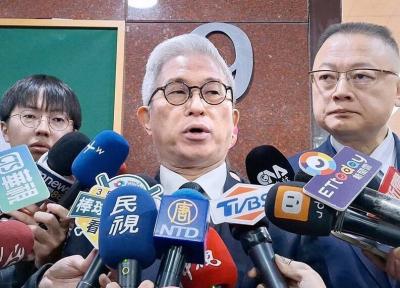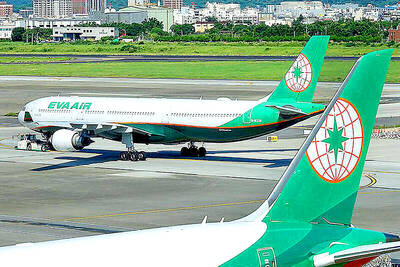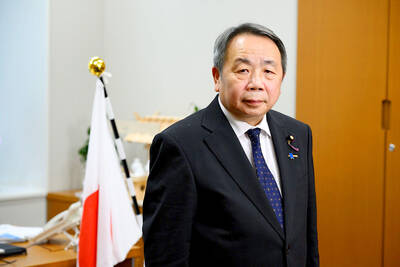The Pentagon has approved the sale of 60 F-35 Joint Strike Fighters or 60 F-15 Silent Eagle aircraft to South Korea, as tensions on the Korean Peninsula continue to mount.
“This sale only underscores the hypocrisy of continuing to deny Taiwan replacement F-16s for its soon-to-be-retired F-5s and Mirage 2000s,” US-Taiwan Business Council president Rupert Hammond-Chambers told the Taipei Times.
“The threats the [South] Korean air force face are the same as those of Taiwan’s air force,” he said.
Hammond-Chambers said that South Korea faced a surprise attack from North Korean missiles, artillery and aircraft and possibly a retaliatory attack from the People’s Liberation Army (PLA) Air Force and its Second Artillery if China weighed in to support Pyongyang.
One argument used by opponents of selling F-16s to Taiwan is that China could easily ground them by staging a massive missile attack on the nation’s military runways.
However, Hammond-Chambers said exactly the same argument could be used for not selling advanced fighters to South Korea.
“Attacks on South Korean airfields as well as US bases could well be [a] surprise and massive and yet we’ve just forward deployed F-22s too,” he said.
A final decision by Seoul on which plane to buy is expected later this year after the completion of a competition between the two US planes and the Eurofighter Typhoon.
The estimated cost of 60 Lockheed Martin Corp F-35 Joint Strike Fighter conventional take-off and landing (CTOL) aircraft and associated equipment, parts, training and logistical support would be US$10.8 billion.
Boeing’s F-15 or the Eurofighter Typhoon would cost less.
Lockheed said its F-35 would give South Korea all-aspect stealth with the most advanced avionics ever integrated into a fighter aircraft providing a quantum leap in capability over all fourth-generation aircraft.
Boeing said it was confident the F-15 was best suited to Seoul’s requirements.
Reuters reported that many analysts expect South Korea to follow Japan and buy the F-35. Singapore may order about a dozen F-35s later this month and Australia is helping to fund their development.
The US Department of Defense’s approval of the sale of either the F-35s or the F-15s came as the Wall Street Journal reported that South Korea was pressing US President Barack Obama’s administration for permission to produce its own nuclear fuel.
Nonproliferation experts said that was a move that could trigger a wider nuclear arms race in North Asia and the Middle East.
“South Korea’s government has reassured Washington during the negotiations that it isn’t seeking to develop the ability to build nuclear weapons,” the Journal said.
However, the paper said that US lawmakers were concerned that the technologies Seoul was seeking — the ability to enrich uranium and reprocess spent nuclear reactor fuel — would provide it with the key technologies needed to produce the fissile materials for a bomb.
“That capacity could further inflame tensions between the Koreas and risk sparking a broader arms race in Northeast Asia, potentially including Japan and Taiwan,” the newspaper said.
Richard Fisher, a senior fellow in Asian military affairs at the International Assessment and Strategy Center in Alexandria, Virgina, said that in announcing the future sales of fighter aircraft to South Korea, the Obama administration was trying to signal its resolve in the face of Pyongyang’s threats.
However, sales of new fighters to South Korea will not affect the balance of power until 2020 or after and South Korean and wider Asian interest in nuclear weapons has been driven mainly by US nuclear reductions in the face of China’s and North Korea’s nuclear buildup, he said.
Washington’s decision to dismantle nuclear armed Tomahawk cruise missiles unilaterally eliminated the only secure US tactical nuclear strike option to deter North Korea, “so it is no surprise that South Korea now may be seeking its own nuclear weapons,” Fisher said.
Fisher said that if Washington really wanted to affect Chinese behavior positively, it should also move to offer Taiwan a package of 50 to 60 F-35B short take-off fighters.
“Only then will Beijing come to realize the real cost of its blatant assistance to North Korea’s new KN-08 intercontinental ballistic missile aimed primarily at the US,” he said.
“Taiwan clearly requires the F-35B to better survive China’s emerging fifth-generation fighters and sales announcements for Taiwan in addition to South Korea will provide a much needed boost in confidence for the F-35 program,” Fisher said.

A strong continental cold air mass is to bring pollutants to Taiwan from tomorrow, the Ministry of Environment said today, as it issued an “orange” air quality alert for most of the country. All of Taiwan except for Hualien and Taitung counties is to be under an “orange” air quality alert tomorrow, indicating air quality that is unhealthy for sensitive groups. In China, areas from Shandong to Shanghai have been enveloped in haze since Saturday, the ministry said in a news release. Yesterday, hourly concentrations of PM2.5 in these areas ranged from 65 to 160 micrograms per cubic meter (mg/m³), and pollutants were

Taiwan’s armed forces have established response protocols for a wide range of sudden contingencies, including the “Wan Chun Plan” to protect the head of state, the Ministry of Defense (MND) said today. After US President Donald Trump on Saturday launched a series of airstrikes in Venezuela and kidnapped Venezuelan President Nicolas Maduro, concerns have been raised as to whether China would launch a similar “decapitation strike” on Taiwan. The armed forces regularly coordinate with relevant agencies and practice drills to ensure preparedness for a wide range of scenarios, Vice Minister of National Defense Hsu Szu-chien (徐斯儉) told reporters before a

EVA Airways on Saturday said that it had suspended a pilot and opened an investigation after he allegedly lost his temper and punched the first officer several times as their plane was taxiing before takeoff at Los Angeles International Airport. According to a report published on Thursday by The Reporter, the incident occurred after the flight’s Malaysian first officer tried to warn the Taiwanese pilot, surnamed Wen (文), that he was taxiing faster than the speed limit of 30 knots (55.6kph). After alerting the pilot several times without response, the first officer manually applied the brakes in accordance with standard operating

Japanese Councilor Hei Seki (石平) on Wednesday said that he plans to visit Taiwan, saying that would “prove that Taiwan is an independent country and does not belong to China.” Seki, a member of the Japan Innovation Party, was born in Chengdu in China’s Sichuan Province and became a naturalized Japanese in 2007. He was elected to the House of Concilors last year. His views on the Chinese Communist Party (CCP) — espoused in a series of books on politics and history — prompted Beijing to sanction him, including barring Seki from traveling to China. Seki wrote on X that he intends